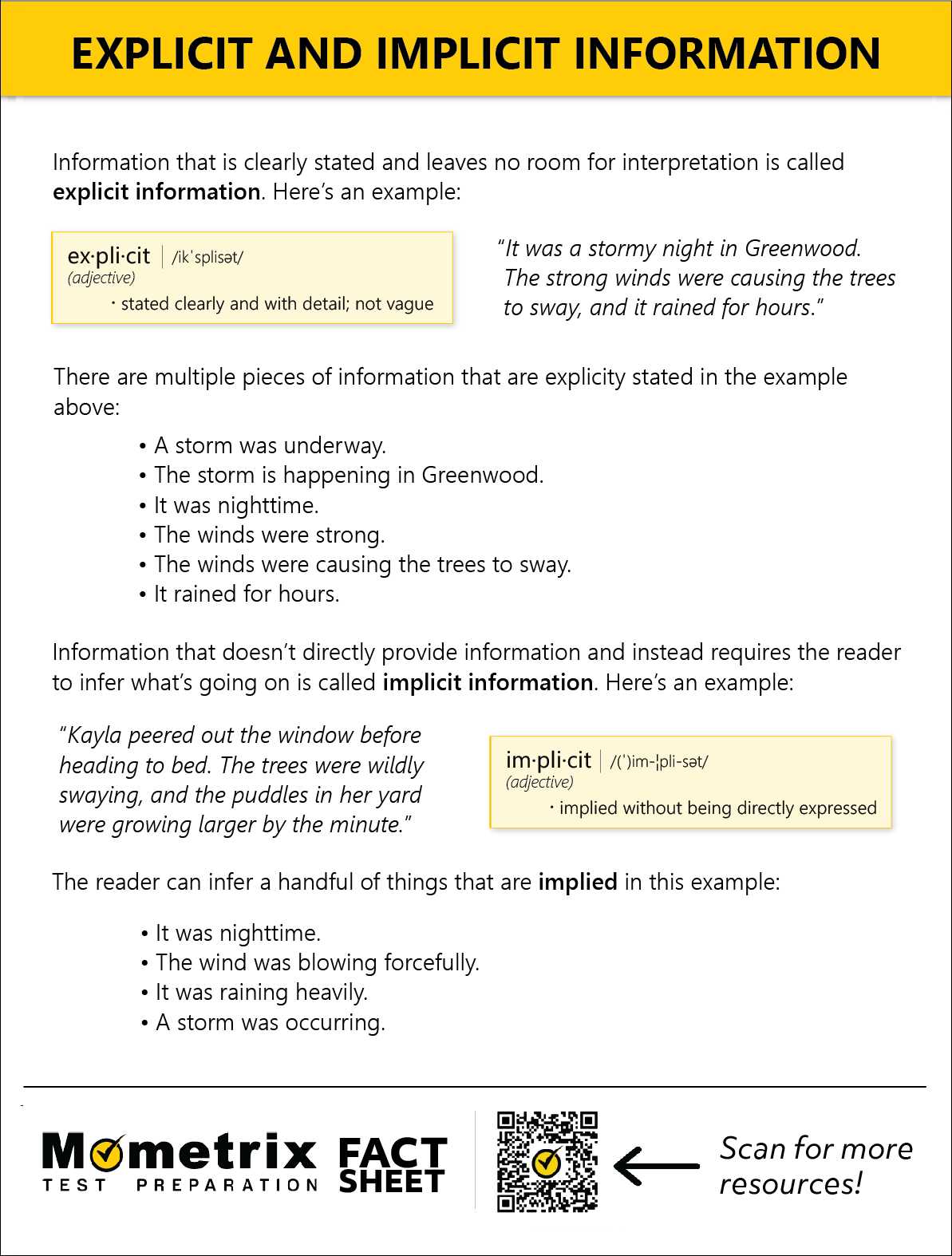
In this video, we’re going to talk about the difference between explicit and implicit writing. When talking about writing, explicit means something that is stated plainly, while implicit refers to something that is implied and not stated directly.
Let’s start by looking at explicit information in writing.
Explicit Information
Explicit information is clearly stated, leaving nothing implied. For example, the phrase “it was a dark and stormy night,” uses explicit information that leaves no room for debate. The reader cannot assume, by any stretch of the imagination, that the story is in fact taking place on a sunny morning.
Here’s another example of explicit information from the first line of Franz Kafka’s book, The Metamorphosis:
The book is, in fact, about a salesman named Gregor Samsa who wakes one morning to find himself inexplicably transformed into a huge insect. Therefore, as shocking and confusing as this first sentence might be, it is still stating the information explicitly.
Implicit Information
Let’s compare that with the first line of J. M. Barrie’s Peter Pan:
This is an example of an implicit statement. We aren’t told explicitly “there once was a boy named Peter Pan, and he magically never grew older,” but we are prepared for that eventual knowledge by this implicit sentence.
If something is implicit, it is not directly stated. The reader must understand implicit information and facts based on other clues in the text. Let’s think back to our “dark and stormy night” example. What if the sentence ran like this: “The trees were swaying wildly outside Anne’s window as she prepared for bed, and the gutters were overflowing.”
Even though it’s not stated directly, the reference to Anne preparing for bed leads us to believe it’s nighttime, and the swaying trees and overflowing gutters are additional implicit clues that it is stormy.
Influencing Your Writing
How can the knowledge of explicit and implicit information influence your writing?
Sometimes, stating something clearly can be the best way to make your point. This can be true in fiction, like in the Franz Kafka piece we looked at earlier, but it is especially true in essays and reports. You want to use explicit information and facts in scientific and non-fiction writing because it is clear and unmistakable. You don’t want your reader to have to guess your meaning.
Implicit information has a place as well, especially in fiction. You may not realize it, but you use implicit information every day to communicate. Have you ever told someone, “trash pick up is tomorrow,” and really meant “please put the trash on the curb?” Implicit information can help your writing seem more natural, and often be a better—although more roundabout—way to make your point.
The important thing to remember when using implicit information is that the reader will be forced to guess your meaning from clues in the text. Make your clues clear, then, so as to avoid any confusion. For example, if you write that a character hisses “it would be a shame if anything happened to you,” your reader might assume the statement is a threat. If you intend the reader to understand a less menacing implicit meaning, you might want to rephrase your statement like this:
I hope that this video helped you understand explicit and implicit information in your writing. See you guys next time!

